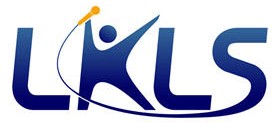Lessons on E-mail Etiquette
Florida Weekly (July 18, 2013) recently published an article on e-mail etiquette. It’s almost surprising that we haven’t yet mastered this skill – or is it? Teaching e-mail etiquette is always interesting – the stories that are told clearly demonstrate that in our push to be more productive, we often sabotage ourselves with simple mistakes in the way we write and deliver e-mail messages.
My top tips for writing effective e-mail include:
- First focus on your reader! Make it easy for them to find what they need, understand what they find, and use what they find to meet their needs. Remember to think about the person who will receive the message. If they are a “detail person,” give them detail. If they have no attention span, make the message short. Think about the reader and about the response you need from them – before you hit “send.”
- Make your message clear. Ask yourself, “Why am I writing this?” When you have the answer, make that your opening line! Tell them specifically what outcome you expect as a result of the e-mail – don’t make them guess.
- Keep the message short – but not too short. A message that is too long will not get read – a message that is too short will come across as rude.
- Make it easy to read. Use bullet points and headings to help your reader quickly find what they need. Don’t waste time on smiley faces and extra fonts and colors – many are difficult to read and frustrate the reader.
- Take the time to check for accuracy. Accuracy includes spelling and grammar of course – but also message content and clarity.
In the Florida Weekly article, writer Athena Ponushis, through interviews with several experts, concludes that e-mail should be brief, written for public view, and considerate of tone. Conveying the right tone is often tricky and best done by sticking to facts and avoiding attempts at using humor and other “cutsie” things that your reader may misinterpret.
From the Florida Weekly article:
Oh, to be able to type tone, to transcend time and space. Lorna Kibbey, an advisor at the Florida Gulf Coast University Small Business Development Center, shares an insightful story: “A business colleague sent me an e-mail a while back and closed with LOL — which I thought meant ‘laugh out loud.’ Thing is, there was nothing funny; it was a fairly serious e-mail.
“I started asking people what they thought LOL meant. Other than ‘laugh out loud’ the only answer I got was ‘lots of love.’ Well, that one scared me — what did this colleague intend?
“Finally, someone suggested ‘lots of luck.’ I liked that answer, I went with that one.”
Breaking down the moral of her story, Ms. Kibbey says, “Don’t use acronyms, text language, jargon and other ‘words’ that can be misinterpreted or misunderstood.”
View the full article at: http://naples.floridaweekly.com/news/2013-07-18/Business_News/Email_etiquette.html
If you need more help with e-mail etiquette, call or write any time.
Lorna Kibbey
